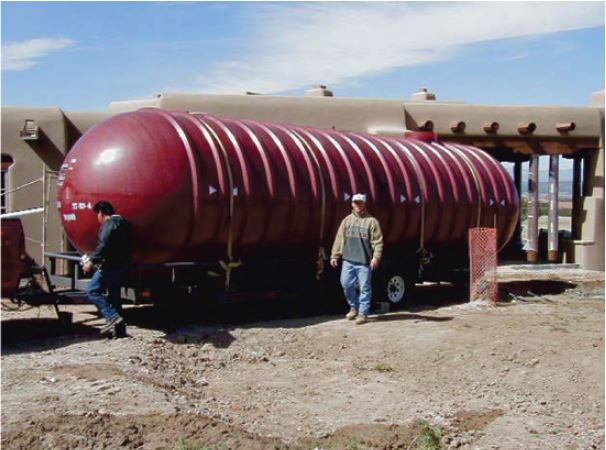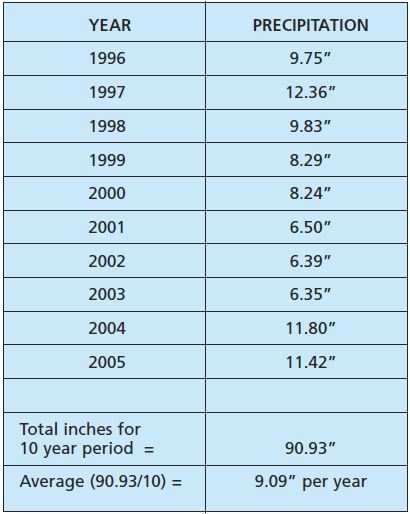The PermaDesign Weblog, with Nate Downey and Melissa McDonald!
Archives from October 2015
Roof-Reliant Landscaping™ Step 12E: Planning and Designing PHASE 5: Choose Your Design
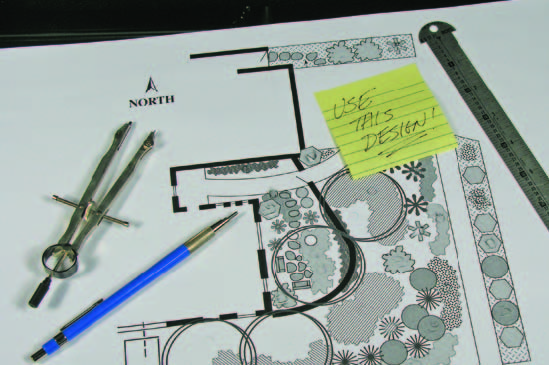
Choosing a design for your final roof-reliant system is a very personal decision. It involves your particular sense of aesthetics, your level of desire for being outdoors, your finances, your level of commitment to roof reliance and many other factors.
10/30/2015 | (0) Comments
Roof-Reliant Landscaping™ Step 12D: Planning and Designing PHASE 4: Generate Various Options
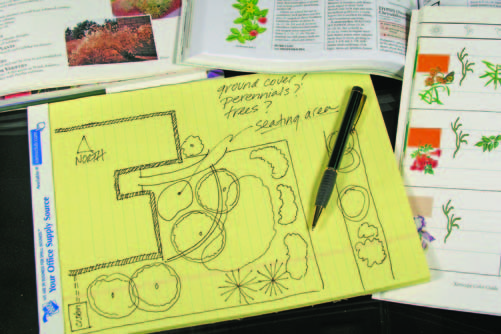
Now it is time to determine options for the landscape features you will have on your property and where they will be placed in relationship to each other. Based on your conceptual design, start to determine the places where the various features of your landscape might best be located.
10/28/2015 | (0) Comments
Roof-Reliant Landscaping™ Step 12C: Planning and Designing PHASE 3: Develop a Conceptual Plan
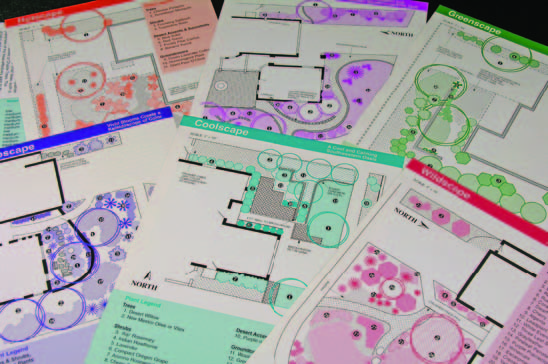
The third phase of landscape design is the development of a conceptual plan. Here, you integrate the scope and goals of your design with your site observations and evaluation. A conceptual plan provides the basic form of your landscape design, which includes the most important requirements of the plan with few details.
10/26/2015 | (0) Comments
Roof-Reliant Landscaping™ Step 12B: Planning and Designing PHASE 2: Evaluating Your Site
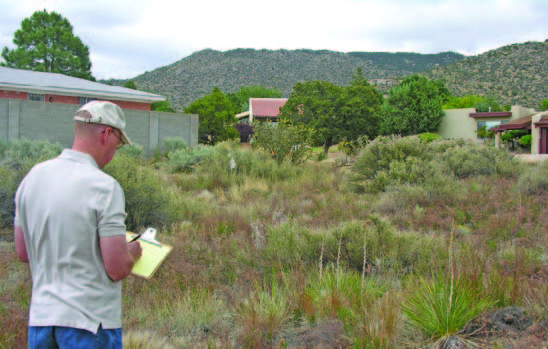
The second step in the landscape design process is site evaluation. This consists primarily of observation and research.
10/23/2015 | (0) Comments
Roof-Reliant Landscaping™ Step 12A: Planing and Designing Your Landscape: Phase 1: Clarify the Scope

The first phase in designing your landscape should be to establish goals and objectives that help clarify the scope of your project. These goals will help set the course for your design and ensure that you create a roof-reliant landscape that is compatible with your lifestyle.
10/21/2015 | (0) Comments
Get Ready for El Niño, Harvest the Rain
In the desert Southwest sometimes we are faced by the double-edged sword of too much or too little rain. Most often, it is the latter. As rainwater harvesters, we can design systems that help on both ends of the spectrum. Our swales, berms, check dams, and rain-gardens can help moderate the flow, and redirect water to our over taxed aquifers. The subject of the Times article below is a great example of another consequence of drought. Mudslides and flashfloods can increase in severity due to the hardness of soil and lack of vegetation caused by months and years of little rain.
10/20/2015 | (0) Comments
Roof-Reliant Landscaping™ Step 12

After determining the approximate size of your water storage tank, the next step is to start the landscape planning process. However, it should be noted that a landscape plan (especially a roofreliant plan) does not always develop in a linear fashion. Because the components of a landscape plan are so directly related to each other, these components often evolve simultaneously. And as landscape components change during the planning process, other components are also affected and often further adjustments must be made.
10/19/2015 | (1) Comments
Roof-Reliant Landscaping™ Step 11D: Sizing Your Cistern: Part IV – Consider Rainfall Patterns
Some landscape professionals have been known to say that the only cistern that is too large is the one you cannot afford. That’s because in New Mexico, we tend to get infrequent rainfall events. A typical “good” monsoon season consists of a handful of rainfall events that deliver quite a lot of rain (1/2 to 2 inches of rain) at a time. For example, it is not uncommon for areas in New Mexico to receive 1.5 inches of rain within a 24-hour period every two or three years. This would produce almost 1,700 gallons of water from a 1,800 square foot roof. If your water storage ank holds 2,000 gallons and you've already “banked” 500 gallons, then almost 200 gallons of water would overflow out of your cistern.
So, if the budget allows for a larger tank—and there is space on the property for a larger tank—consider applying the One-Half Rule (or even more) if you want to minimize the rainfall events that produce more water than your cistern can hold.
Precipitation can come at any time of year in New Mexico, and you can expect to distribute some portion of your rainwater harvest in between storm events. Therefore, it is unnecessary to have a cistern large enough to store an entire year's worth of precipitation.
For this reason, the recommended cistern size is approximately one-third of the amount that can be collected in a normal year. Therefore, the owners of the 1,800-square-foot roof in the Albuquerque example on the previous page should consider a cistern in the 2,000 to 3,000 gallon range.
10/15/2015 | (0) Comments
Roof-Reliant Landscaping™ Step 11C: Sizing Your Cistern: Part III – Understanding Normalcy
Now that you have determined the square footage of your collection area, the next step in sizing your cistern is to estimate the amount of precipitation that you might collect in a given time period. It is important to note that there is a significant distinction between “average” and “normal” when discussing the amount of precipitation your location receives in a year.
Although average annual precipitation data is easy to find for most municipalities and counties throughout the state, the concept of average precipitation is misleading in New Mexico. It is actually normal for a location to get 20 percent less precipitation than the average annual precipitation figure. This is because occasional wet years skew the average.
10/12/2015 | (0) Comments
Roof-Reliant Landscaping™ Step 11B: Sizing Your Cistern: Part II-Roof Shape
It is not uncommon for a roof to be affected by other factors that can slightly complicate this simple calculation. The most common of these factors occurs when two roof surfaces need to be added together, as in the figure below. The house shown below has a garage, which should be included in the total roof square footage. Buildings such as portals, sheds, shade structures and other roof surfaces that can serve as collection areas also need to be included in your calculations.
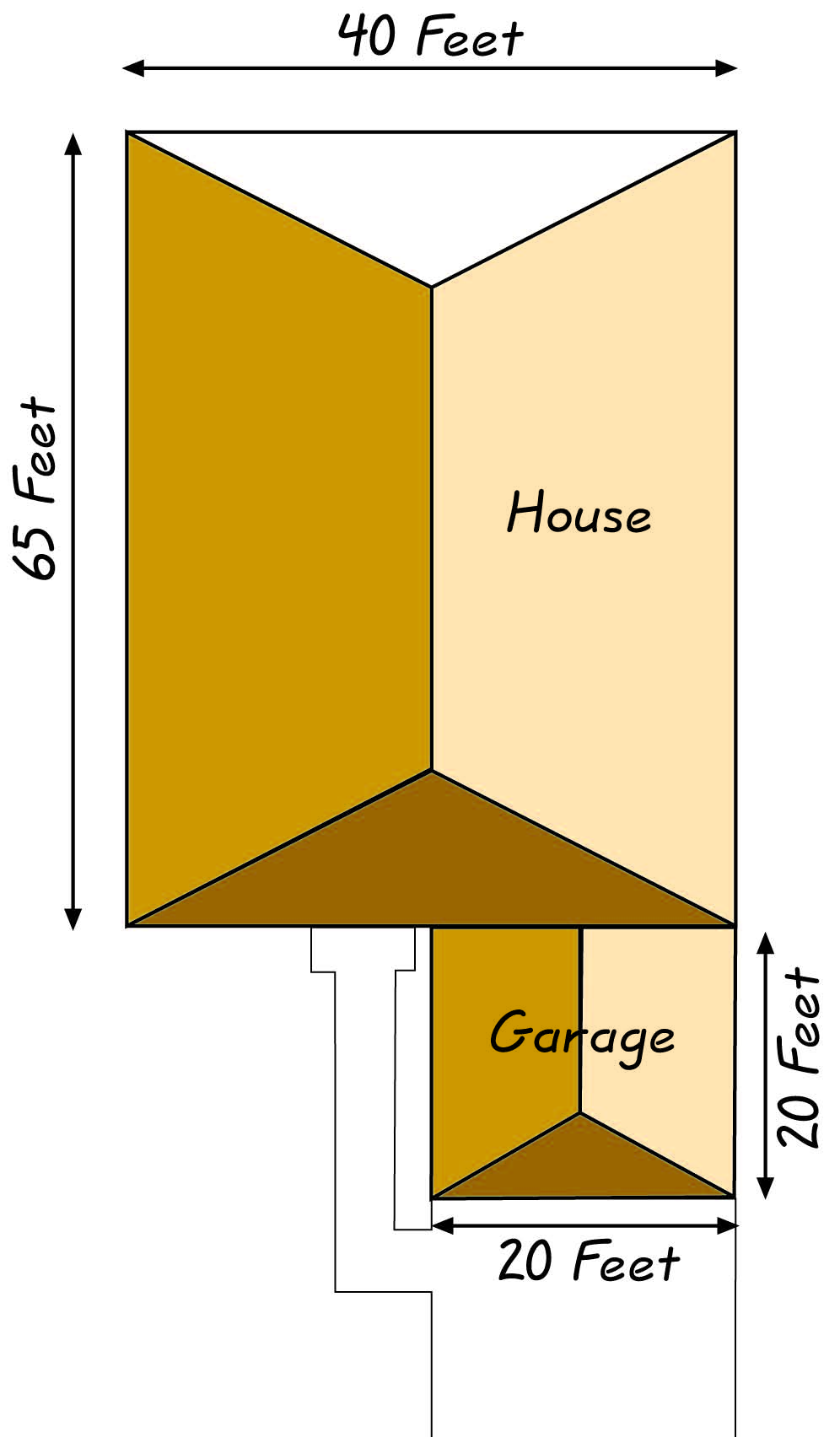
10/08/2015 | (1) Comments

